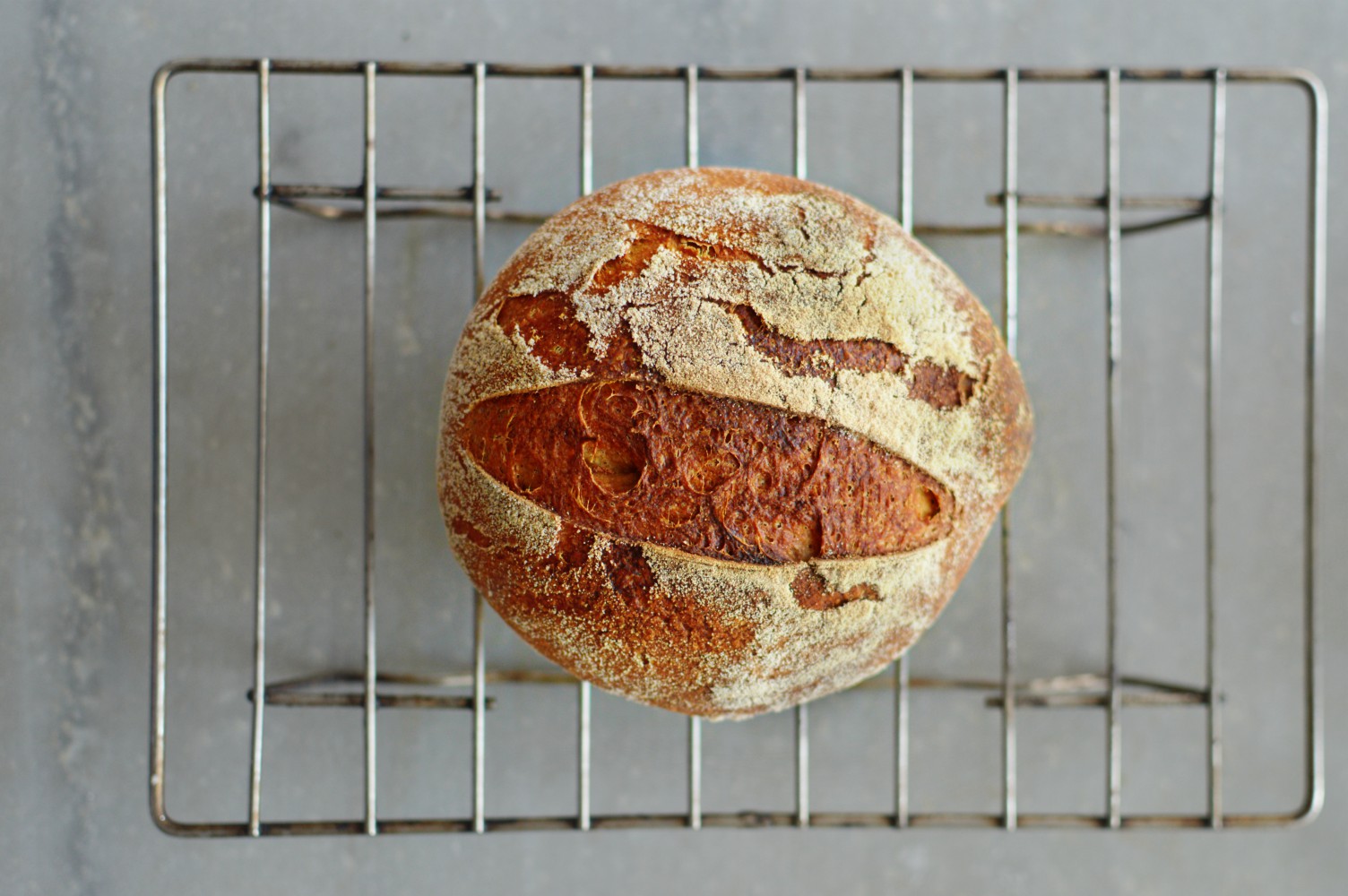
I made Sourdough bread at home. Yep! I have done it. I raised a good starter, fed it and baked a bread to perfection (in my standards) this morning, and ate it twice- once for breakfast with homegrown basil and tomato & the other with hot tea (toasted and buttered). And in between when I didn’t eat, I walked past it, looking at it with love in my eyes gloating to my own self about how wonderful it all looks. In my mind I was “showing” all those who didn’t believe in me when I was a youngster. A loaf became testimony, gleaming at the world with its shining crust screaming about my awesomeness and I swear I could fly.
It was a lovely day! ROFL. And I think it’s mainly because I rode the possibility of making a good loaf off long back given a) how small my oven is b) I don’t own bread baking equipments c) I failed with my starter twice before this d) I’m not a professional baker. I am a hit or miss baker myself, so it was easy to give up really. I told myself twice that it’s okay, you don’t have to make everything at home & I was completely happy eating artisan bread from famous boulangerie until I published Anita’s Sourdough recipe on my e-magazine.
While editing the photos and putting everything down in place, I kind of developed a keen interest in the process. Unlike previous times where I was mostly drawn towards the end product and had given up on the starter in about 2 days, this time I was more interested in the changes that was taking place. I was really keen to see what happened, if I didn’t give up. Follow instructions, give it time and see what happens if you are willing to give it what it truly requires. And for that I needed to know this a bit further
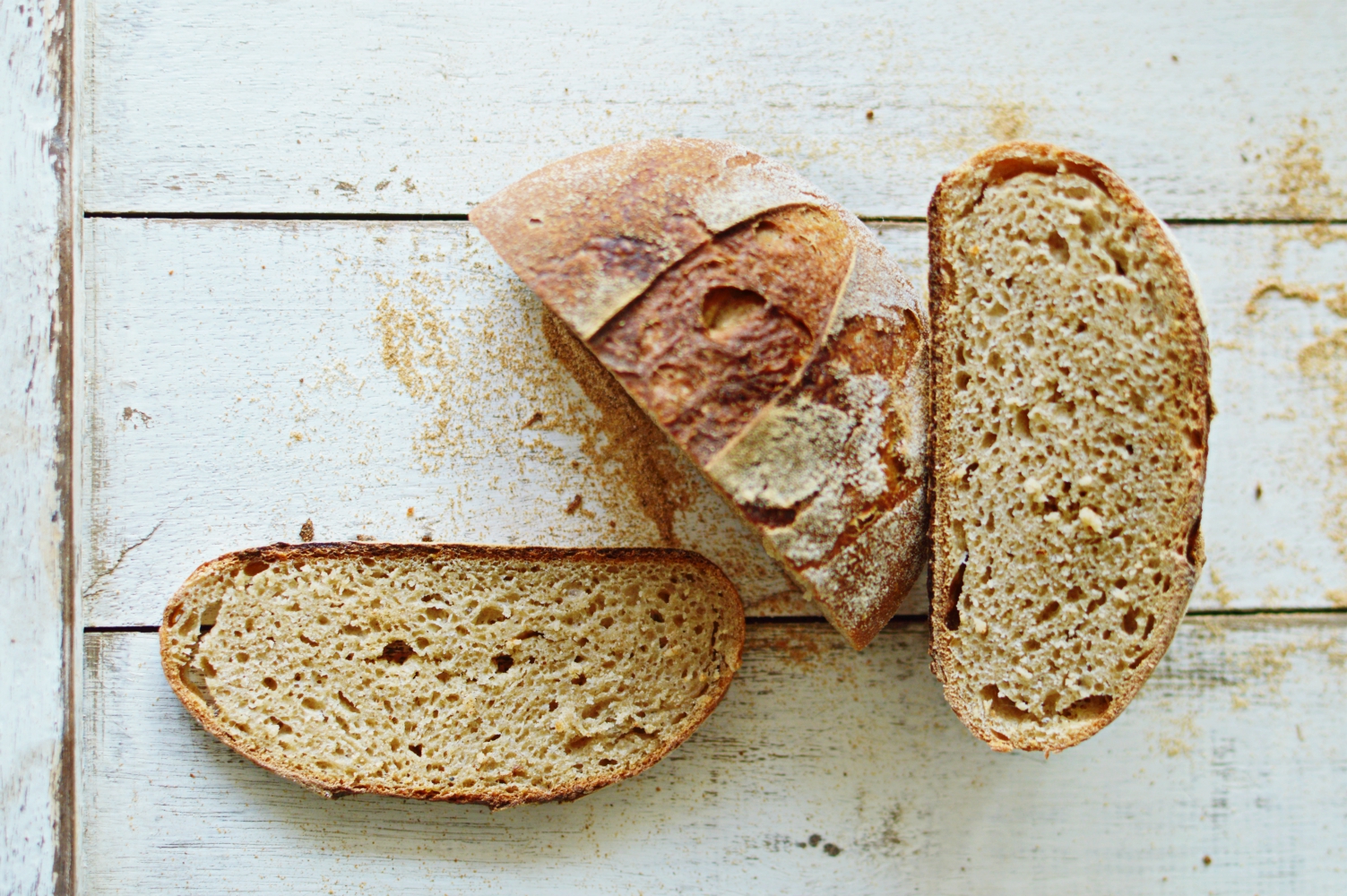
Enter Patrick Ryan
Search how to make sourdough bread on youtube and the first channel that opens is that of “I Love Cooking Ireland” where Patrick Ryan demonstrates the basics of sourdough. And this is what changed my entire sourdough bread making feeble life. See the video if you can, or, here’s what he suggests even before you start on the sourdough process. And I think knowing these are equally important to knowing the recipe because you must have a good understanding of what’s going on in the glass jar.
What is Sourdough?
Sourdough is souring of dough. Which means fermenting dough using naturally occurring yeast and lactobacilli. A sourdough starter is actually a fermented dough culture that contains both of the above in a symbiotic combination. And how does that happen? We are surrounded by wild yeast. It’s a wonderful strain of bacteria that we breathe in everyday. When you mix flour and water, the mixture eventually picks up those bacterias and in turn the bacteria feeds off the protein in the flour and the whole thing slowly starts to ferment, making your dough rise and collapse. That is why you need to feed the sourdough starter. Because it’s alive! How fascinating
Over the period of 5 days, I watched the video thrice to just be sure I am on the right path and I just kept at it. I didn’t get into the technicalities much and believed that something as old and rudimentary like this has to work. Because you see, most of it is you leaving it to just nature and having patience and the outcomes of such are always great.
How to make a sourdough starter
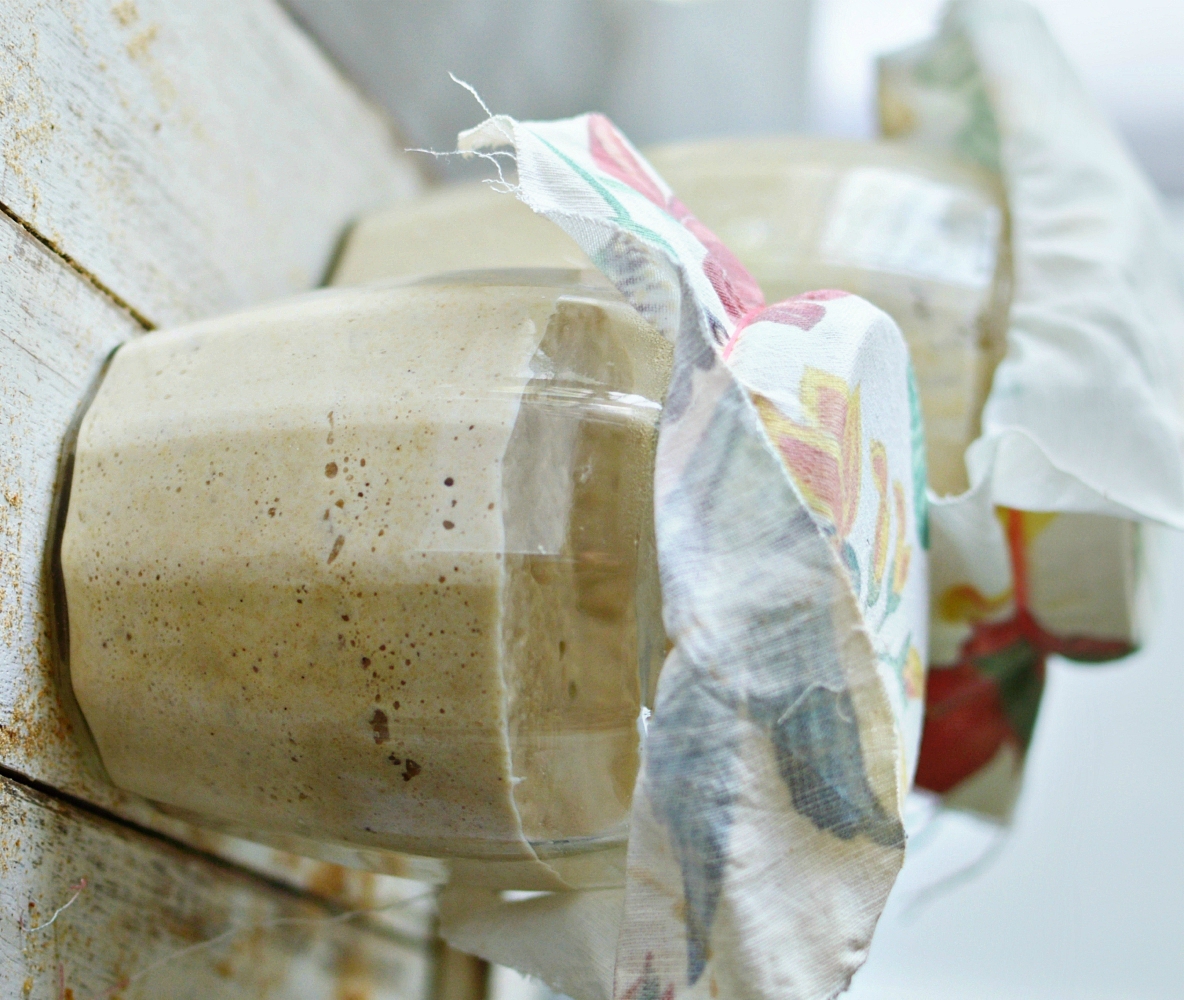
You’ll need a kitchen scale, un-bleached, preferably organic wheat flour and water. A sterilized glass jar and a loose fitting lid or a piece of cloth and a rubber band/twine.
Days and proportions of Discard + Feeding
Now, honestly, this will depend on the climate and where you are keeping it and you might find it needs another day or is ready before a week- and that’s all fine. This is how my days looked like.
Day 1: Mix 50 grams flour + 50 ml water in a jar. Secure the top and leave it for 12 hours undisturbed. Start at night, I started at night about 9-ish.
Day 2: By the end of 12 hours your dough must have risen, and the total volume must have reached 100 gram. No discard on day 2. Feed {Insert name} 100 grams flour and 100 ml water. Mix well and leave it for a day.
Day 3: Bubbly, sweet vinegarish smell- which is the exact smell we are looking for. Dont worry if you see a liquid layer and a solid layer- you can mix that back up in. On day 3, you will discard 100 grams of starter and feed it 100 gram flour + 100 ml water again. Leave it in the fridge in the day, keep it on the kitchen counter at night.
Day 4: Discard 150 gram starter and feed it 100 grams flour + 100 ml water. We are slowly building strength here.
Day 5: Discard 200 grams starter and feed it 150 grams flour and 150 ml water
Day 6: Discard 250 grams starter and feed it 200 grams flour and 200 ml water. Rest for a day and your sourdough starter is ready.
How to make Sourdough Bread
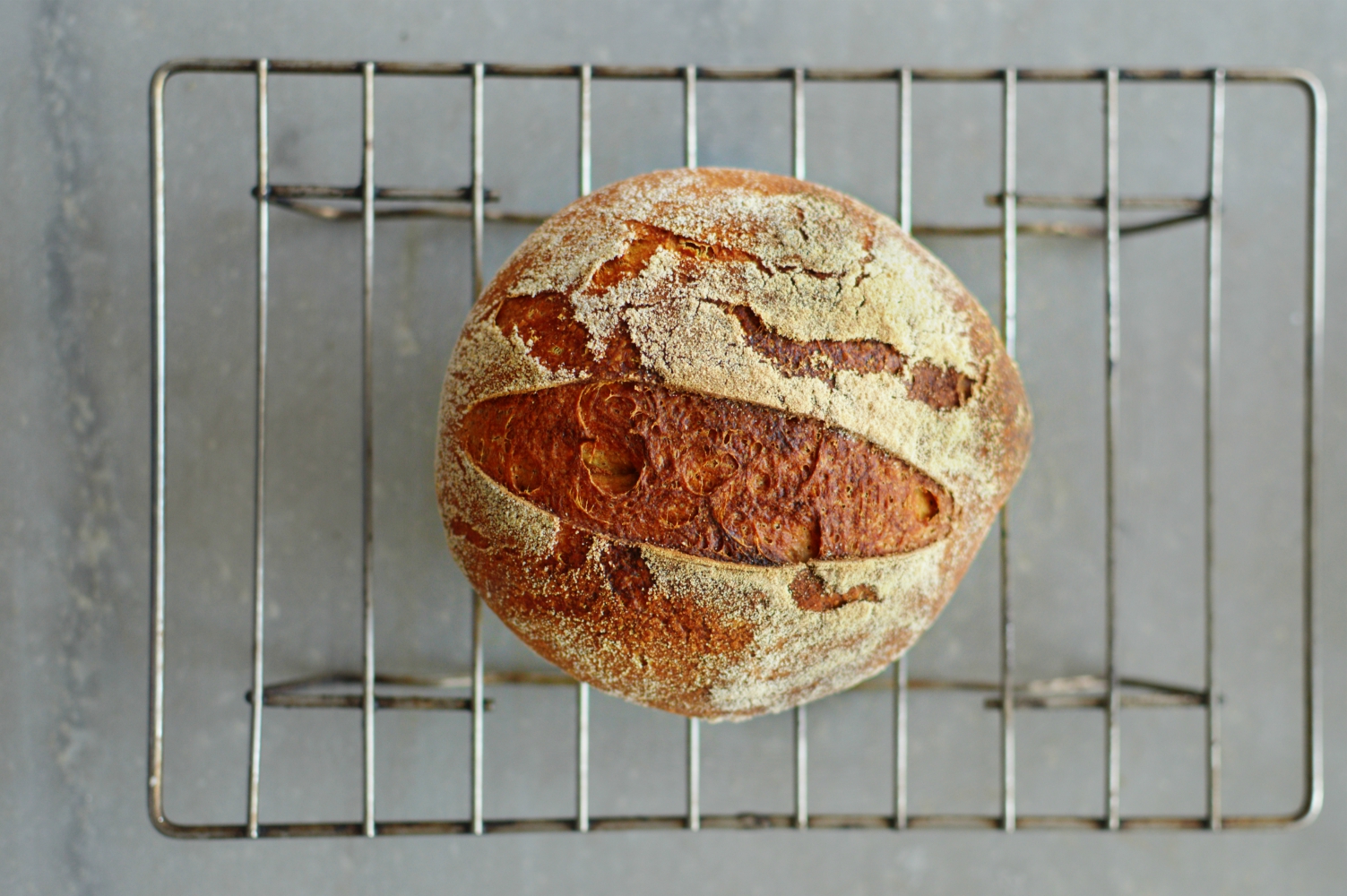
NOTE. And what’s your patience level like?
Unlike baker’s yeast breads, this process is not instant. This will require you to give it time to rise- anywhere between 3 hours to overnight and you have to give it the time. There is no two ways about it. So if you are an impatient one, this where you learn the virtue of patience. Let’s start.
This recipe Makes 2 loaves
In a bowl, add 800 gram all purpose flour, 460 ml of tepid water, 320 grams sourdough starter and 10 grams salt. If you wish to make a small loaf, you can multiply or divide the portions.
You can half the proportions to try out. But please use a kitchen scale.
Bring the dough together, pop it on a kitchen slab/counter and dusting it very lightly with flour, knead the dough for about 8 to 10 minutes. You can use a bread hook if you have.
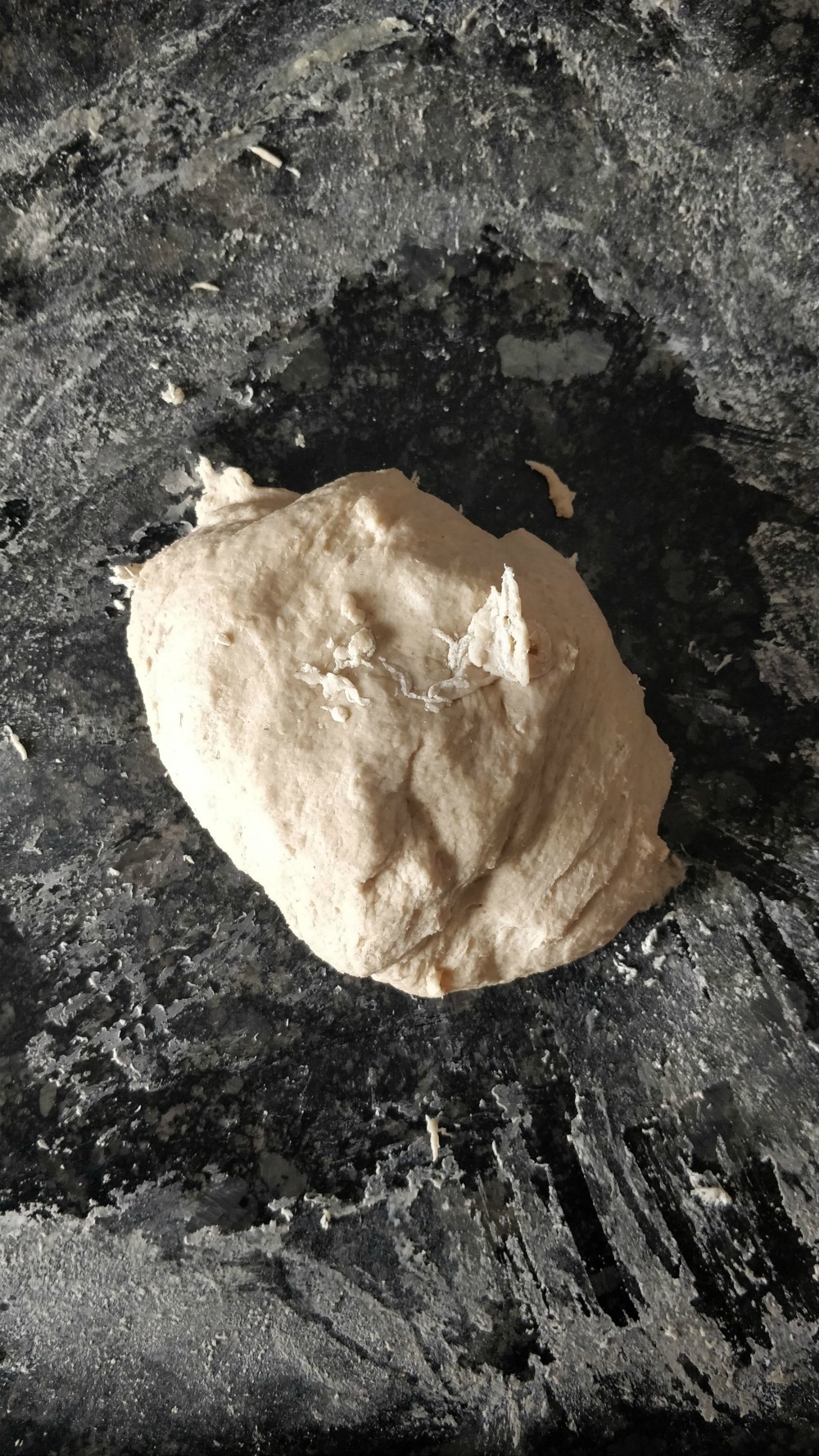
Next, pop it in a bowl, cover it with a kitchen towel and let it rest for atleast 3 hours. The next two photos should give you an idea.
Punch all the air out, knead it a bit and turn it into a smooth round dough. This is when you shape the dough for final proofing. I wanted one loaf, so I didn’t halve it. If you have a bannetton, you can sprinkle some flour and proof it in there overnight. If you dont, you can line a plain cake tin with tea towel, sprinkle flour and proof the dough. Dust the tea towel generously with flour so it doesn’t stick.
NOTE: If you are proofing it overnight, keep it in the fridge. Atleast for our climates. That’s what I did. about 10 hours.
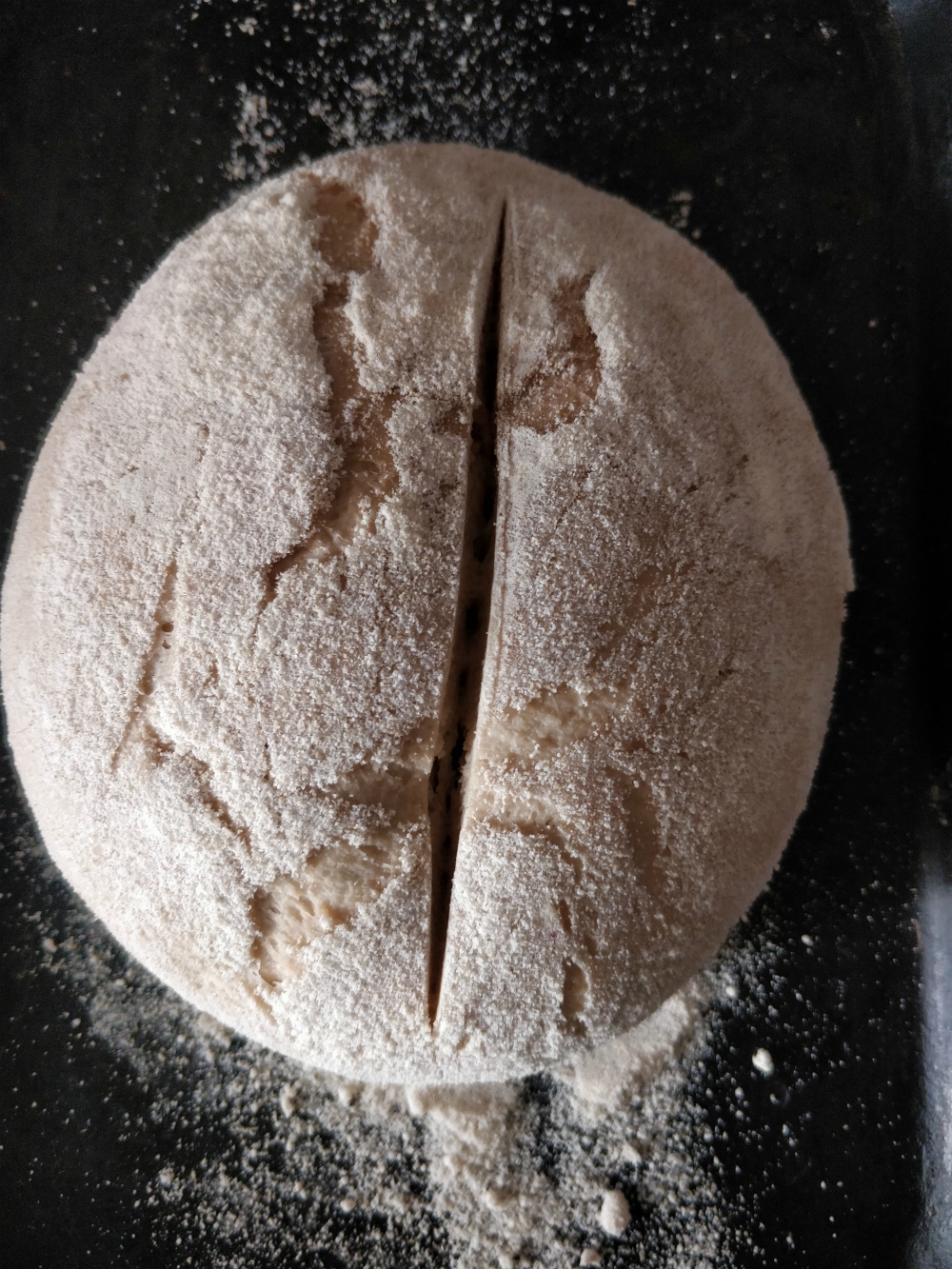
Morning after, this is how it should look. Transfer it to the pan/tin you will be baking it in and then with a sharp knife, score the top. Crank your oven to 240 degrees and preheat the oven. Cover your sourdough with a cake tin or anything that allows some room inside the dough for moisture to form, and bake for 20 minutes, covered.
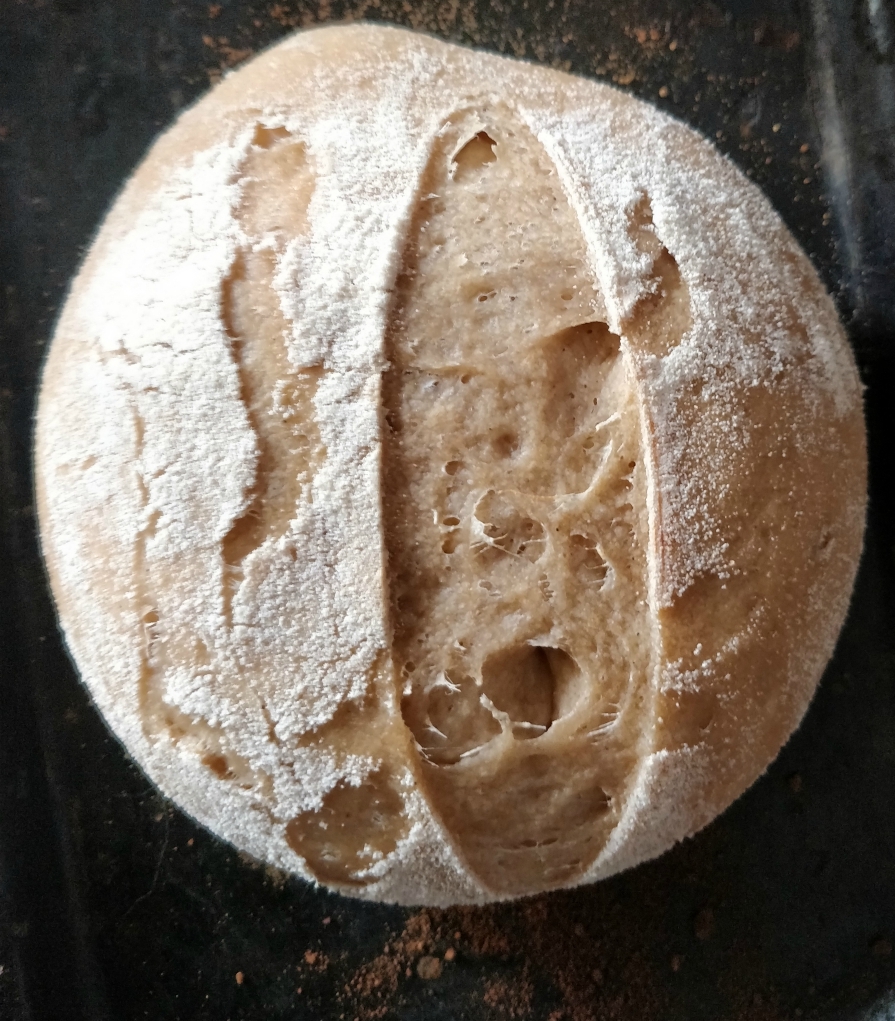
And then bake without lid for another 20
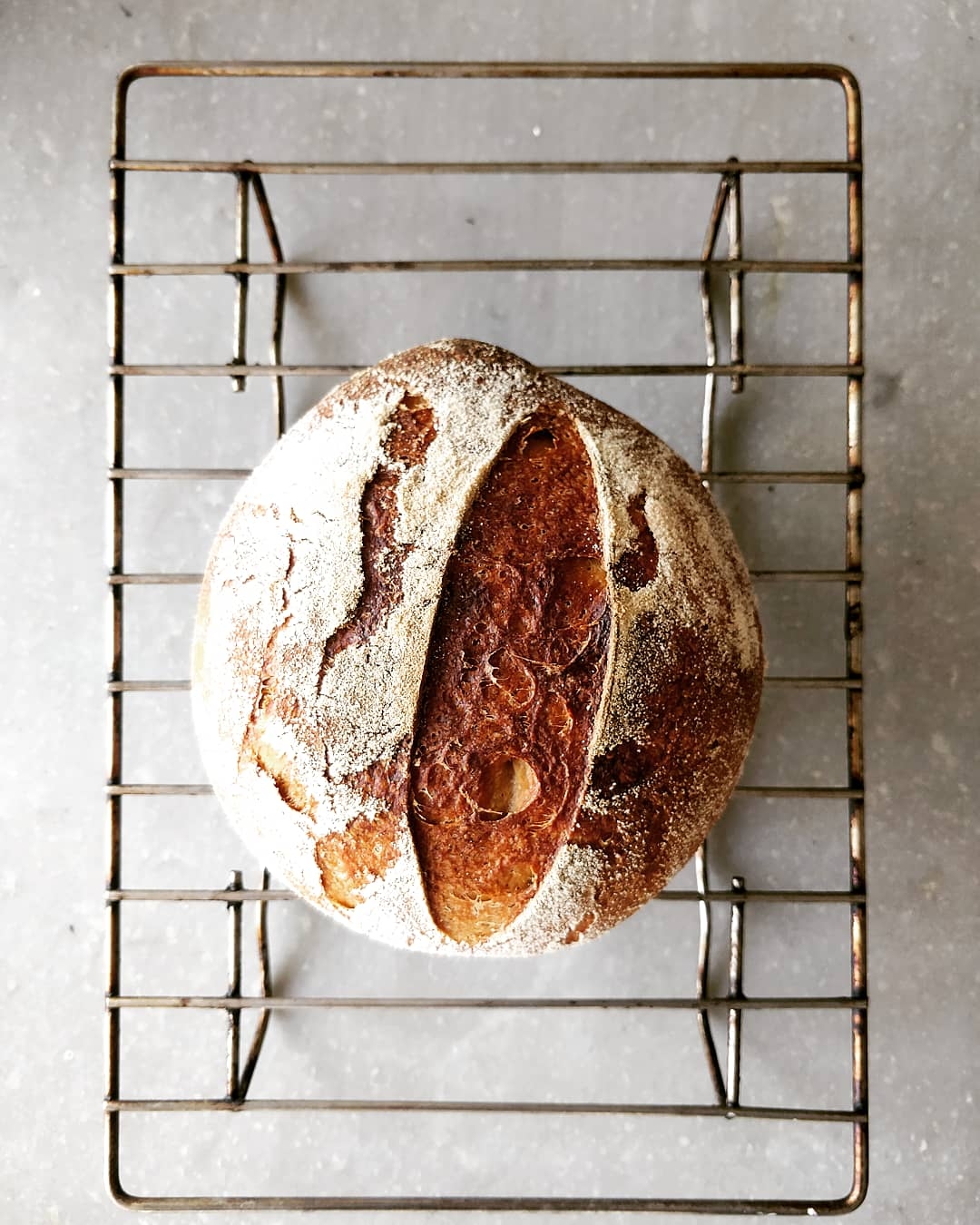
Cool, slice and enjoy! The fruit of your labour is yours to taste.
Sourdough bread particularly tastes good if you toast it lightly and slather it with butter. It’s a perfect accompaniment to your soups and pastas and we are not even considering the fact that you will actually make it from just flour and water- no sugar, no oil, no egg nothing.
For me, what really got me hooked is how with two simple kitchen ingredients you can make something so gorgeous only if you are willing to have patience. That very loaf became the yoda for me teaching me life lessons throughout the process. And I can bet my life on it that you’ll love it too.
Go try. It’s worth the waiting

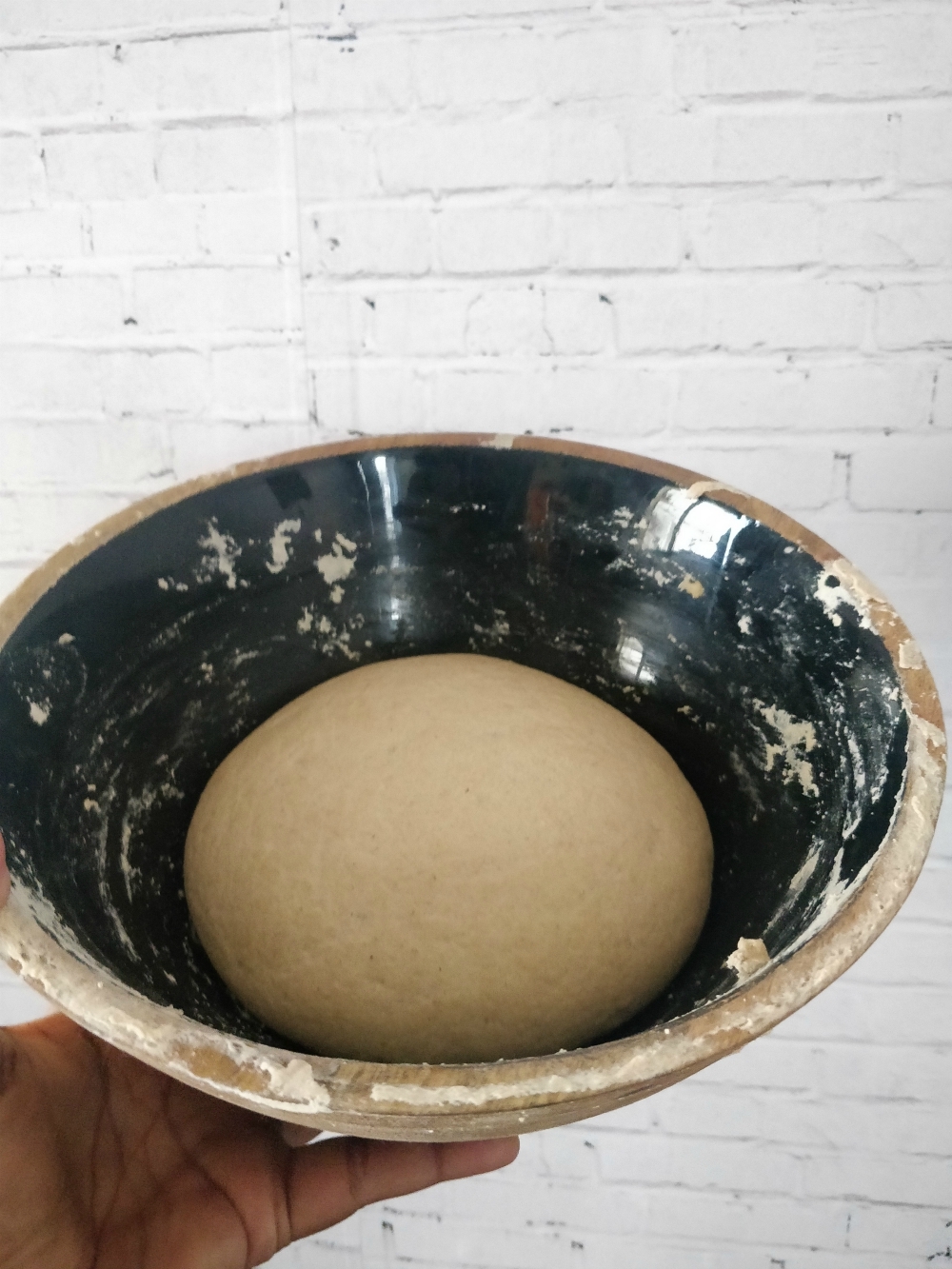
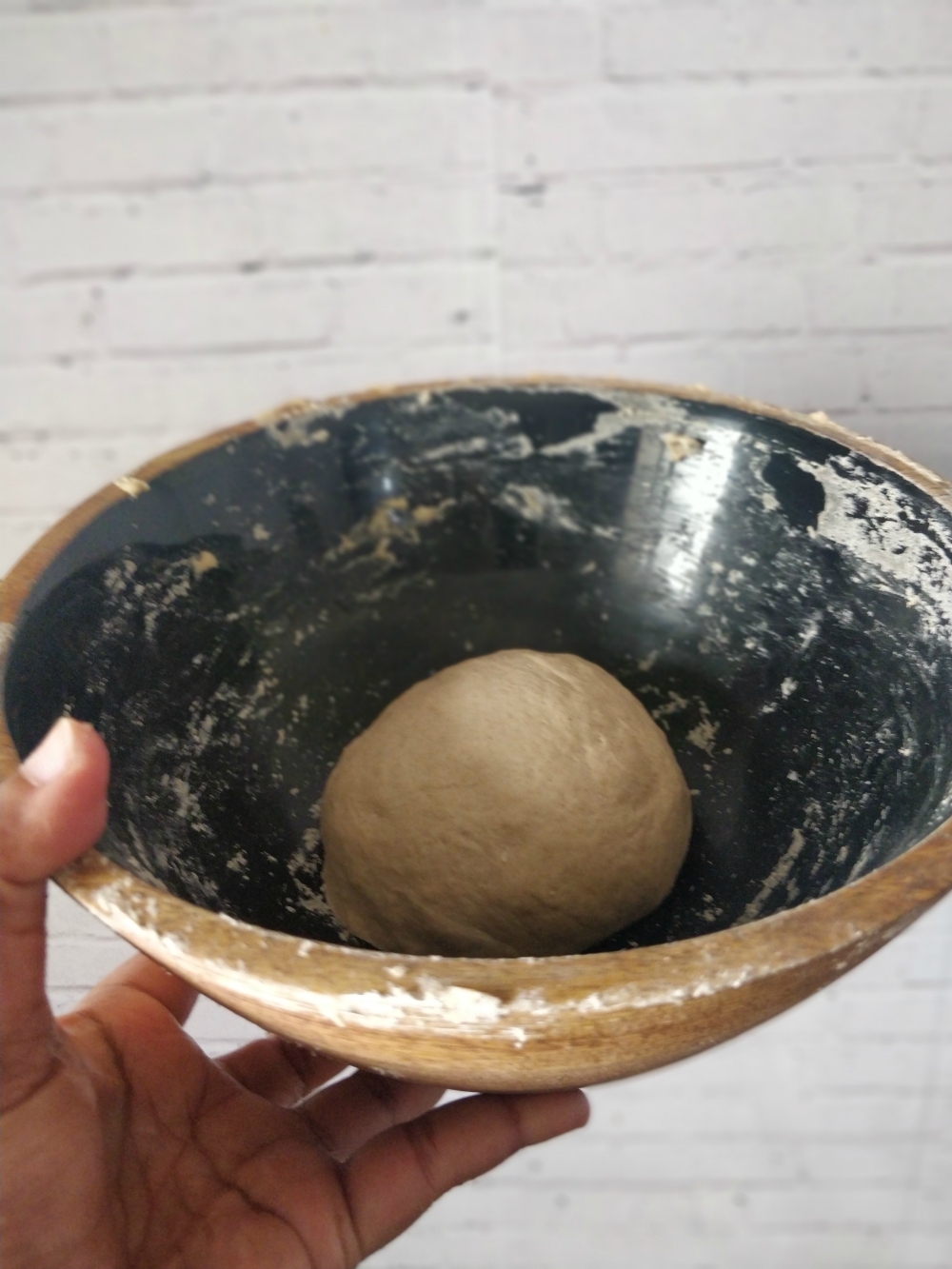
2 thoughts on “How to make Sourdough Starter + Bread at home”